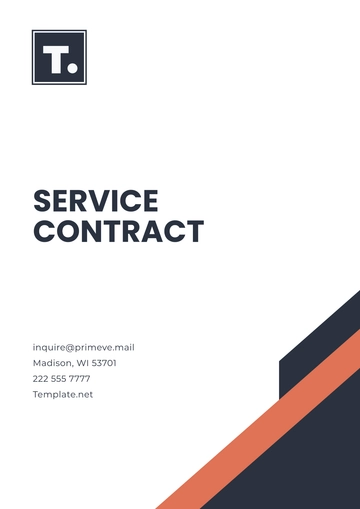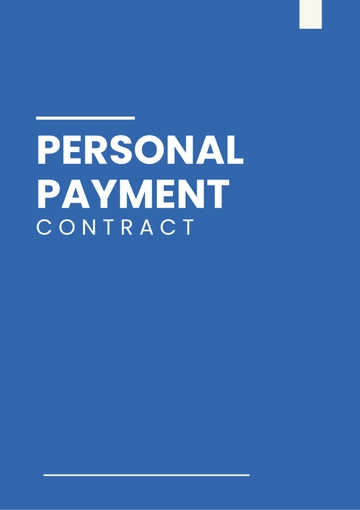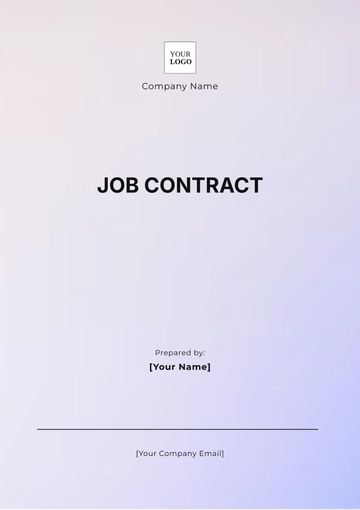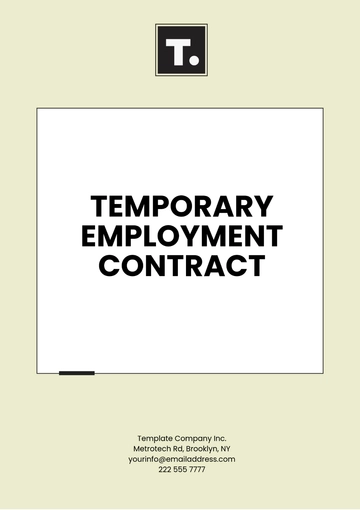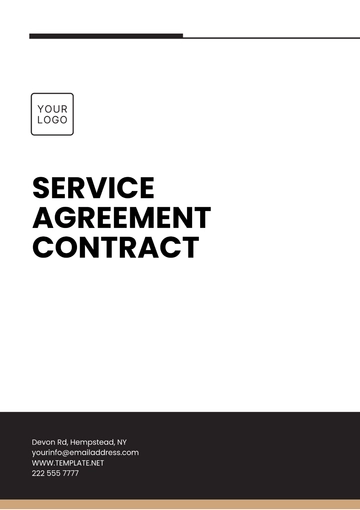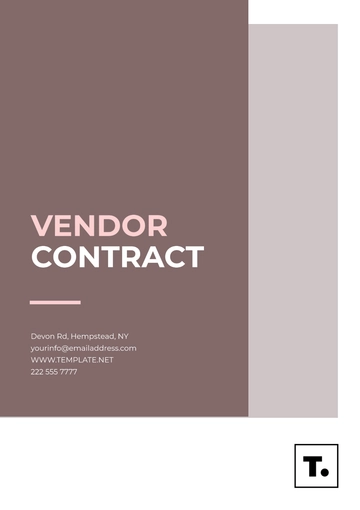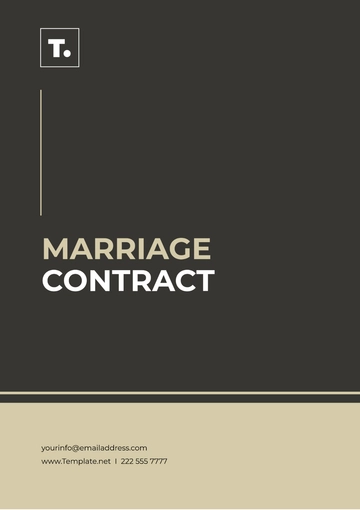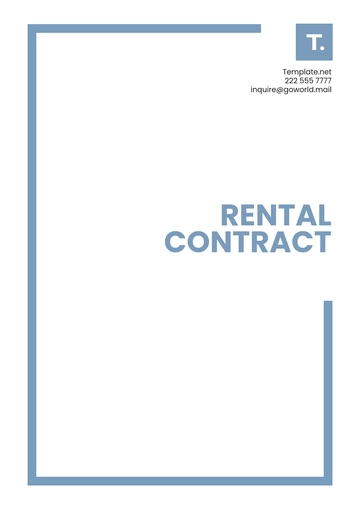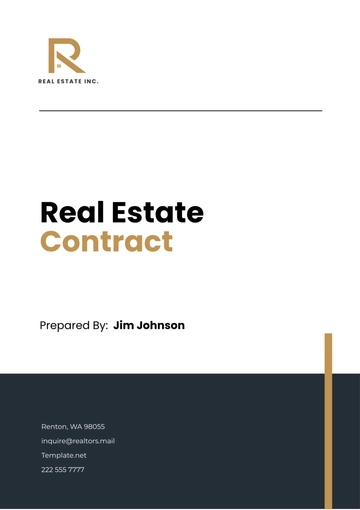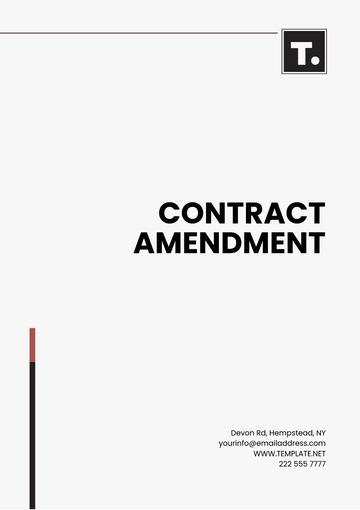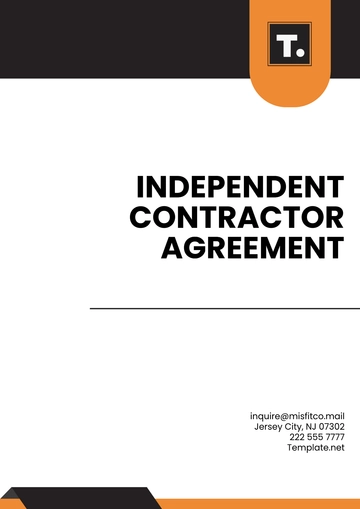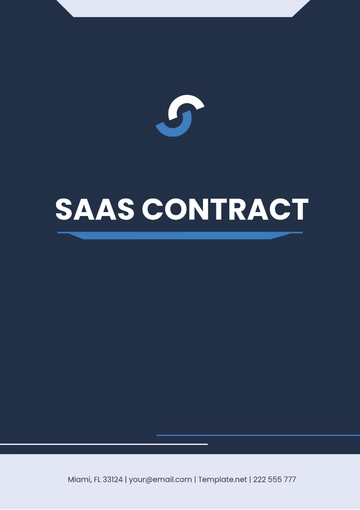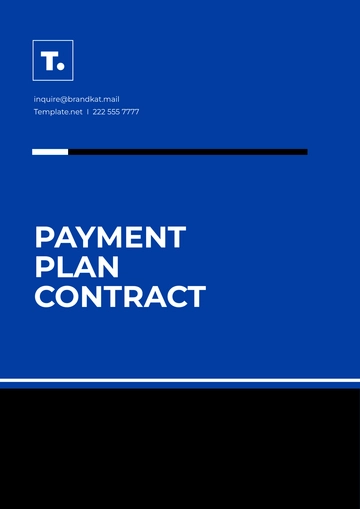Free Sales In-depth Research on Contractual Risks
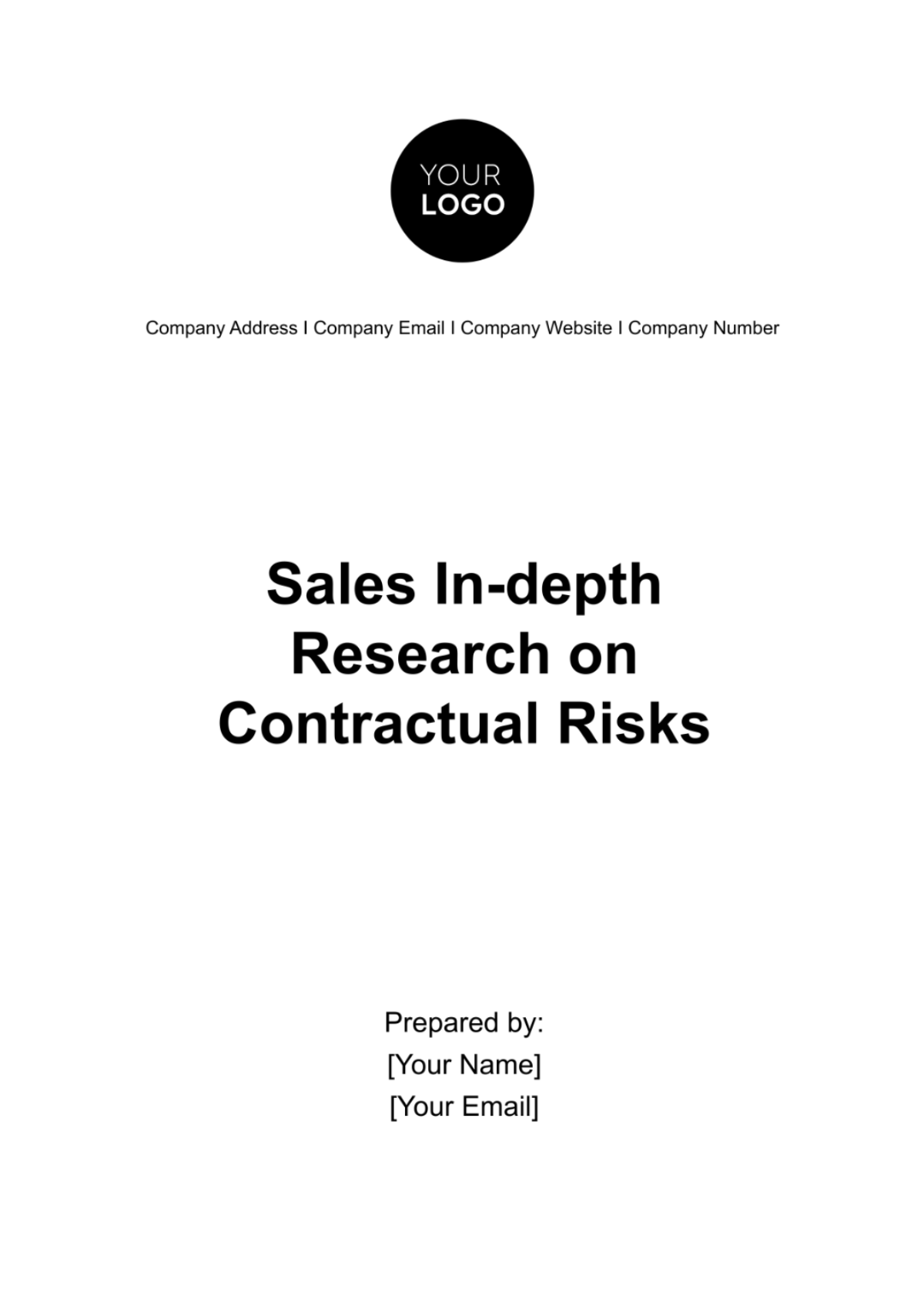
Dear [Client's Name],
Re: Sales In-depth Research on Contractual Risks for [Client Company Name]
We are pleased to submit the enclosed research report, which aims to provide an exhaustive study on the contractual risks associated with sales engagements. Our team has diligently conducted this research to identify the various types of contractual risks, assess their potential impact on your business operations, and propose actionable mitigation strategies.
Having worked with [Client Company Name] previously, we understand the complexities and challenges your organization faces. As such, this document is tailored to offer insights and solutions that resonate with your business model and objectives.
Enclosed you will find detailed sections covering:
Types of Contractual Risks
Risk Assessment Methodology
Risk Mitigation Strategies
Case Studies
Recommendations
Our aim is to equip [Client Company Name] with the necessary tools and knowledge to make informed decisions and to effectively manage contractual risks. We believe that this report will serve as a valuable resource for your company.
Please take your time to review the attached Sales In-depth Research on Contractual Risks report. We would be more than happy to arrange a meeting to discuss the report in detail and address any questions or concerns you may have.
We look forward to your positive response and are excited about the prospect of contributing further to the risk management strategy of [Client Company Name].
Thank you for considering [Your Company Name] for your contractual risk management needs.
Sincerely,

[Your Name]
[Your Job Position]
I. Executive Summary
In an increasingly complex and ever-changing business environment, understanding and managing contractual risks is more vital than ever for sustainable business operations. Recognizing this, [Your Company Name] have developed a detailed, in-depth research report tailored specifically for [Client Company Name]. This comprehensive document offers a panoramic view of the contractual risks commonly associated with sales engagements. It doesn't just stop at identification; we have also invested significant effort into assessing the possible impact these risks could have on your business performance and bottom line.
The report is structured into several key sections that delve into the types of contractual risks, methodologies used for risk assessment, and strategies for risk mitigation. We've also included case studies to provide practical examples and insights into how these risks manifest and how they have been successfully managed or mitigated in real-world scenarios. Our ultimate aim is to provide [Client Company Name] with a resource that is not just informational but actionable. Whether you are in the contract negotiation stage, active contract management phase, or are looking at contract renewal, this document is designed to serve as a comprehensive guide to aid informed decision-making. We believe that a well-managed contractual environment will not only mitigate risks but also contribute to a more profitable and efficient business operation.
II. Objective and Scope
Objective:
The primary objective of this research report is to conduct an exhaustive study focused on identifying, assessing, and analyzing contractual risks that are inherent in sales engagements. Beyond mere identification, the study aims to propose a suite of effective mitigation strategies tailored for [Client Company Name]. In doing so, the report aims to equip your organization with the necessary tools and knowledge for making informed decisions in the management of sales contracts. This in turn will contribute to the safeguarding of your organizational assets, reputation, and financial stability.
Scope:
The research ambitiously covers several key areas that are crucial for a holistic understanding of contractual risks in sales:
Types of Contractual Risks: This section aims to categorize and describe various types of contractual risks like payment risks, quality risks, regulatory risks, and timeline risks. Each category will be analyzed for its potential impact and likelihood of occurrence.
Risk Assessment Methods: The report employs multiple methodologies to assess risks, including expert interviews, historical data analysis, and simulations. The goal is to quantify the risks where possible and qualitatively describe them where quantification is not feasible.
Mitigation Strategies: This is the crux of the report. After identifying and assessing the risks, this section will provide a comprehensive list of mitigation strategies. These strategies will be backed by research and, where possible, case studies to validate their effectiveness.
Real-life Case Studies: This section will include real-world examples of companies who have successfully managed or failed to manage contractual risks. The idea is to provide practical insights into the actual implementation and effectiveness of various strategies.
Recommendations: Based on the comprehensive analysis, the report will conclude with specific, actionable recommendations for [Client Company Name]. These will be tailored recommendations that could be immediately implemented to improve your current risk management practices.
Through this multi-faceted approach, the report seeks to provide a well-rounded, actionable resource for [Client Company Name] to use in its ongoing and future contract management endeavors.
III. Types of Contractual Risks
To provide a structured overview of the various types of contractual risks that could affect sales engagements, we have prepared a detailed table. This table serves as a succinct yet comprehensive guide to understanding the different categories of risks, their potential manifestations, and the impact they could have on [Client Company Name]. This categorization is crucial for the subsequent steps of risk assessment and mitigation. It offers a groundwork upon which to build effective risk management strategies.
Table of Types of Contractual Risks
Types of Risk | Description | Potential Impact |
|---|---|---|
Payment Risks | Risk associated with delayed or defaulted payments | Cash Flow Disruption |
Quality Risks | Risk that delivered goods or services fail to meet standards | Reputation, Litigation |
Regulatory Risks | Risk of failing to comply with laws and regulations | Fines, Legal Action |
Timeline Risks | Risks associated with delays in delivery or service | Customer Dissatisfaction, Penalties |
By understanding each type of risk in this structured format, [Client Company Name] can more effectively tailor its risk management approach, ensuring that both common and unique risks are accounted for in contractual dealings.
IV. Risk Assessment Methodology
Understanding the various types of risks is only the first step in effective risk management. The second, equally crucial step, is to assess these risks in terms of their likelihood of occurrence and their potential impact. The aim of this chapter is to outline the methodology used for the risk assessment portion of this research. We have employed a multi-faceted approach to provide a thorough understanding of the risks and their potential implications for [Client Company Name].
Methods Employed:
Expert Interviews. One of the primary methodologies used is Expert Interviews. We consult with legal advisors, contract managers, and professionals in the sales industry who have years of experience in identifying and managing contractual risks. Their insights provide invaluable qualitative data, adding depth to the existing literature and statistical analysis.
Historical Data Analysis. We've also performed an analysis of historical contract data for [Client Company Name] and similar companies in the industry. This helps in identifying trends, recurring issues, and the effectiveness of previously implemented risk mitigation strategies. It offers a quantitative backbone to the risk assessment, thereby substantiating the findings from expert interviews.
SWOT Analysis. SWOT (Strengths, Weaknesses, Opportunities, and Threats) Analysis has been applied to identify internal and external factors that can influence the level of risk. It's a tool that allows us to take into account the broader business environment in which [Client Company Name] operates, thereby ensuring that our risk assessment is both comprehensive and contextual.
Monte Carlo Simulation. Finally, we use Monte Carlo Simulation to provide a probabilistic assessment of risks. This computational algorithm allows us to simulate a wide range of scenarios to understand how different factors interact and what their cumulative impact might be. This statistical method is particularly useful for quantifying risks that are complex and have a range of possible outcomes.
By rating each risk based on its likelihood of occurrence and its potential impact, we create a framework that facilitates the development of an informed risk management strategy. This blended approach ensures a well-rounded, rigorous risk assessment that is tailored to the unique operational landscape of [Client Company Name].
V. Risk Mitigation Strategies
After thoroughly identifying and assessing the types of contractual risks that could affect sales engagements with [Client Company Name], the next crucial step is formulating effective strategies to mitigate these risks. This chapter provides a comprehensive list of risk mitigation strategies, tailored specifically to address the unique challenges and risks identified. The aim is to present actionable steps that can be incorporated into your contractual processes to enhance risk management, thereby securing both profitability and compliance.
Table of Risk Mitigation Strategies
Types of Risks | Mitigation Strategy |
|---|---|
Payment Risks | Use of Escrow accounts, Stringent credit checks |
Quality Risks | Quality Assurance Protocols, Third-party audits |
Regulatory Risks | Regular Compliance Audits, Legal Counsel |
Timeline Risks | Robust Project Management, Contingency Plans |
By employing these mitigation strategies, [Client Company Name] can significantly reduce its contractual risks and improve its overall contract management process.
VI. Case Studies
Real-world case studies provide invaluable insights into the practical application, success, and sometimes failure of risk management strategies. By examining these real-life scenarios, we can better understand how to apply theoretical models in an operational context. Below, we delve into two case studies that demonstrate both the negative consequences of poor risk management and the positive outcomes of effective mitigation strategies.
Case Study 1: [Company X] faced significant fines due to regulatory risks |
|---|
[Company X], a well-known manufacturer in the healthcare sector, found itself facing significant fines and legal action due to failure in managing regulatory risks. Despite having a legal department, the company neglected to conduct regular compliance audits. This oversight led to violations of industry-specific regulations concerning waste disposal and hazardous material management. The fines levied were substantial, amounting to several million dollars, and the damage to the company's reputation was even more severe. The market share dropped, and several key clients terminated their contracts. |
This case study emphasizes the importance of regular compliance audits and specialized legal counsel. It shows that even well-established companies are susceptible to regulatory risks if they do not take proactive measures. The experience of [Company X] serves as a cautionary tale for [Client Company Name] on the severe consequences that can come from ignoring or poorly managing regulatory risks.
Case Study 2: [Company Y] mitigated quality risks through third-party audits |
|---|
In contrast, [Company Y], an enterprise in the food industry, successfully mitigated quality risks through the proactive use of third-party audits. When a batch of their products failed to meet internal quality standards, rather than shipping defective items to retailers, they engaged a third-party auditing firm. This firm conducted a comprehensive review of their quality assurance protocols and identified several areas for improvement. Upon implementing these recommendations, [Company Y] not only met but exceeded industry quality standards. |
This success story underlines the importance of quality control measures like third-party audits and robust internal quality assurance protocols. It also illustrates how proactive risk management can turn a potentially damaging situation into an opportunity for improvement and growth.
Both of these case studies provide actionable insights for [Client Company Name]. They underscore the importance of comprehensive risk management practices that should be integrated into any contractual agreements and operational processes.
VII. Recommendations
In light of the comprehensive research and case studies, it's evident that proactive risk management is not merely a best practice but a business imperative for [Client Company Name]. To this end, we offer the following recommendations, designed to enhance your current risk management strategies and mitigate the various types of contractual risks identified in this research.
Establish a Dedicated Risk Management Team. It is crucial to have a team solely focused on identifying, assessing, and mitigating risks. This dedicated Risk Management Team would be responsible for ongoing oversight across different contracts and operational departments. They would liaise with legal, financial, and operational units to ensure a comprehensive approach to risk management. By having a dedicated team, [Client Company Name] will be better equipped to proactively identify risks and address them before they escalate into major issues.
Implement Regular Compliance Audits. As evidenced by one of our case studies, neglecting compliance audits can result in severe financial and reputational damage. Therefore, we strongly recommend implementing a regular schedule of compliance audits. These audits should be both internal and external, and cover all aspects of the business operations relevant to the contracts [Client Company Name] engages in. This will not only help in identifying any potential regulatory issues but also go a long way in maintaining a strong reputation in the market.
Set Up Contingency Funds for Unforeseen Circumstances. Even with the best planning, unforeseen circumstances can arise, creating financial strains and operational challenges. It is, therefore, prudent to establish a contingency fund that can be quickly accessed in emergencies. Whether faced with sudden increases in raw material costs, a natural disaster affecting delivery timelines, or unforeseen legal expenditures, a contingency fund ensures that [Client Company Name] has the financial agility to adapt and respond effectively.
In conclusion, the integration of these recommendations into [Client Company Name]'s current risk management strategies will not only mitigate the identified contractual risks but also strengthen the company's overall resilience and adaptability in an increasingly volatile business environment.
VIII. Conclusion
Navigating the intricacies of contractual risks in sales is not just a legal requirement but a critical factor for the long-term sustainability and profitability of [Client Company Name]. The stakes are high; a failure in managing these risks can result in severe financial repercussions, loss of reputation, and even legal ramifications. This comprehensive research document has aimed to shed light on the various types of contractual risks and provided an in-depth analysis on how to assess and mitigate them effectively. By employing robust risk assessment methodologies and implementing our tailored set of risk mitigation strategies, [Client Company Name] can substantially lessen its exposure to these risks. Furthermore, the real-world case studies and recommendations presented herein serve as actionable guidelines for fortifying your company's risk management practices. The ultimate goal is to empower [Client Company Name] to engage in sales contracts with heightened confidence and reduced risk, thereby securing both profitability and business longevity.
IX. Acceptance
We look forward to assisting [Client Company Name] in implementing these risk mitigation strategies. Please sign below to accept this Sales In-depth Research on Contractual Risks report.
Signature
[Client Name]
[Month, Day, Year]
- 100% Customizable, free editor
- Access 1 Million+ Templates, photo’s & graphics
- Download or share as a template
- Click and replace photos, graphics, text, backgrounds
- Resize, crop, AI write & more
- Access advanced editor
Optimize your approach to contractual risks with Template.net's customizable Sales In-depth Research on Contractual Risks Template. The template is customizable and editable which you can create sections, from risk identification to mitigation strategies. Available in multiple file formats, it's your one-stop solution for informed contract management. Secure your business dealings with this easily editable and professionally designed template.
You may also like
- Rental Contract
- Contractor Contract
- Contract Agreement
- One Page Contract
- School Contract
- Social Media Contract
- Service Contract
- Business Contract
- Restaurant Contract
- Marketing Contract
- Real Estate Contract
- IT Contract
- Cleaning Contract
- Property Contract
- Supplier Contract
- Partnership Contract
- Food Business Contract
- Construction Contract
- Employment Contract
- Investment Contract
- Project Contract
- Payment Contract
- Student Contract
- Travel Agency Contract
- Startup Contract
- Annual Maintenance Contract
- Employee Contract
- Gym Contract
- Event Planning Contract
- Personal Contract
- Nursing Home Contract
- Law Firm Contract
- Work from Home Contract
- Software Development Contract
- Maintenance Contract
- Music Contract
- Amendment Contract
- Band Contract
- DJ Contract
- University Contract
- Salon Contract
- Renovation Contract
- Photography Contract
- Lawn Care Contract


